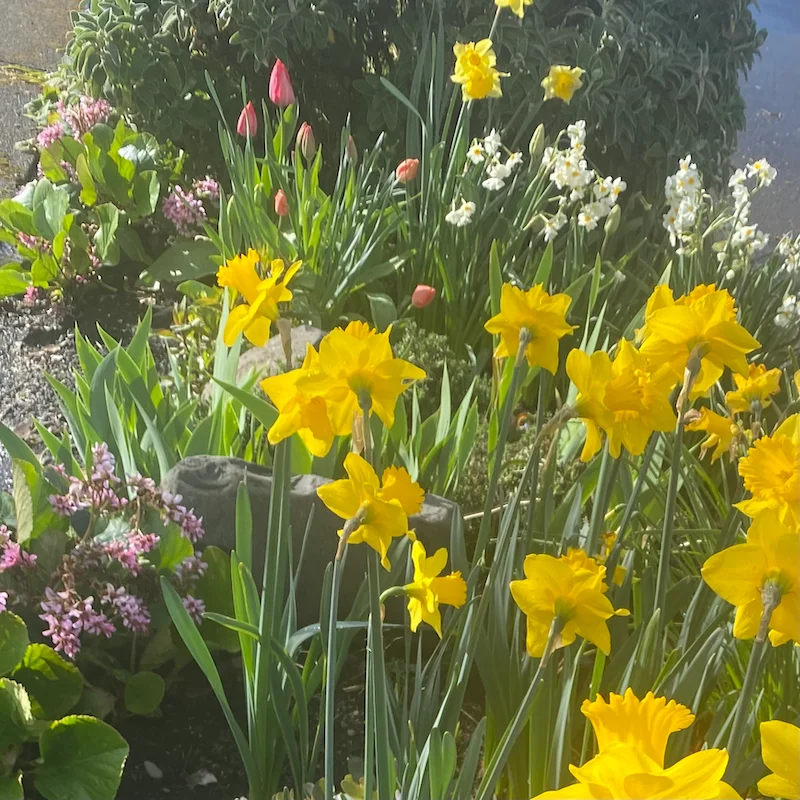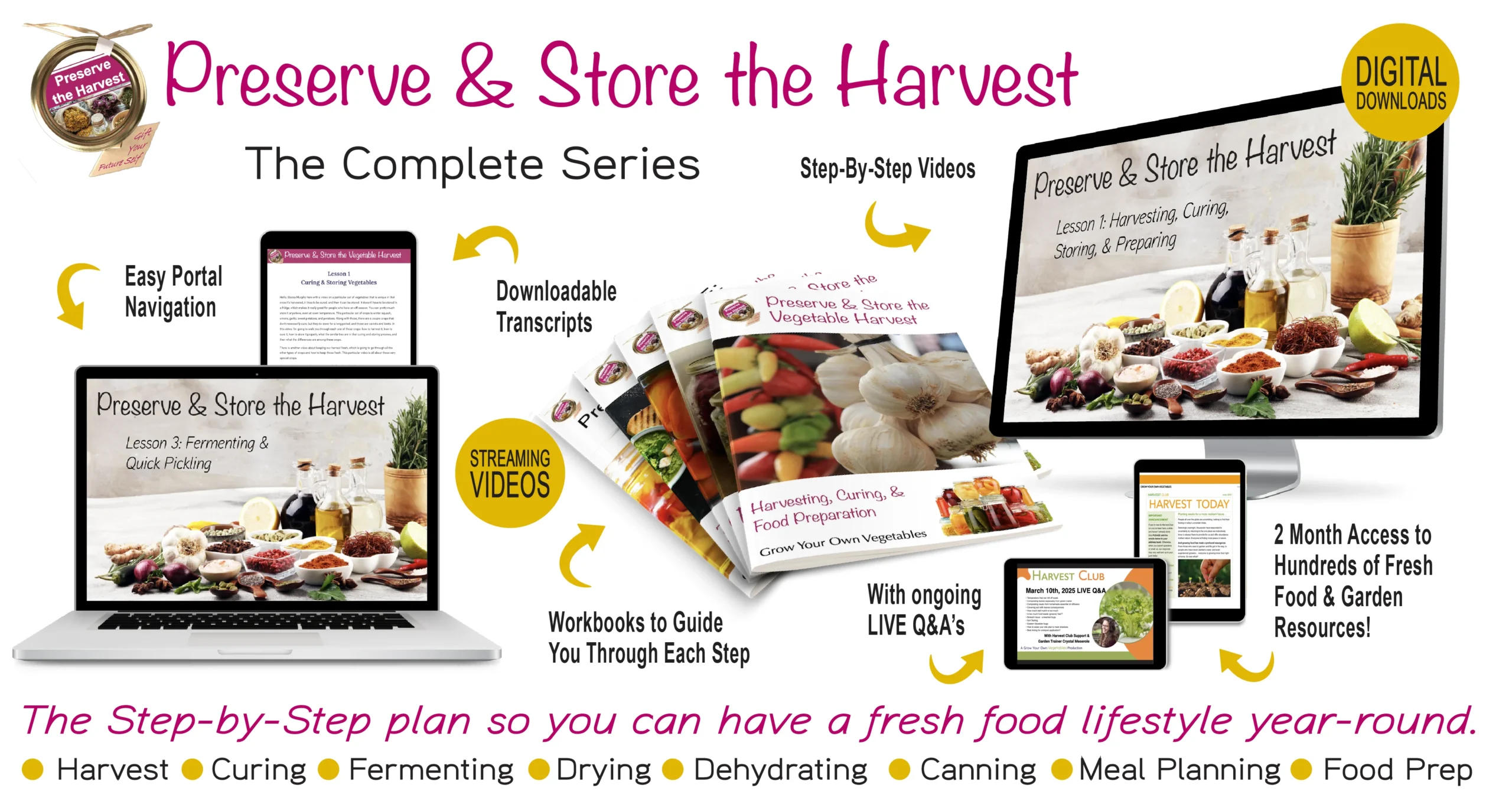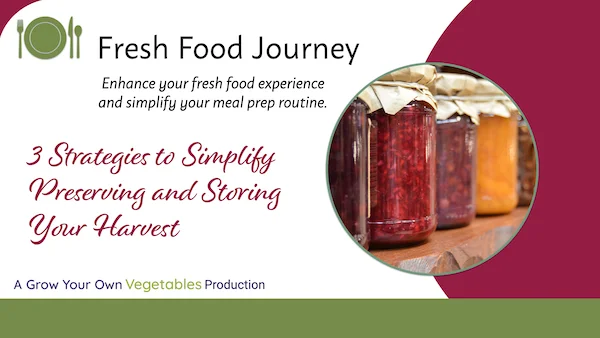Home Gardener’s
Weekly
Issue
No. 120
April
11, 2025
Food For Longevity Guidebook
A groundbreaking study recently set out to answer a crucial question: Can changing your diet actually add quality years to your life?
The results were staggering. People in their 20s could add a full decade (or more) to their healthy lifespan by eating the right foods. Even at 60, switching to an optimal diet could add eight healthy years. And at 80, making changes could still add three or more quality years.
The takeaway? What you eat doesn’t just impact how long you live— it shapes how well you live. That’s why Grow Your Own Vegetables’s friend Ocean Robbins from Food Revolution Network created a brilliant new guidebook on the top 15 foods scientifically proven to support longevity, protect against disease, and help you thrive at every age.
With your copy of Food For Longevity, you’ll also get a free ticket to the 2025 Food Revolution Summit Docuseries— a brand-new eight-part exposé bringing you this year’s biggest breakthroughs in food and health.
You’ll hear from longevity science experts like Dr. Scott Stoll, Dr. Michael Greger, and Dr. Joel Fuhrman alongside leading neurologists, gastroenterologists, dietitians, and researchers, all sharing the cutting-edge insights you need for a longer, healthier life.

Weekly Garden Tip
In many places, the weather is becoming more and more unpredictable with extreme swings. If this is you, it means that you’ll need to adapt your gardening habits. It might also mean you need to add protection earlier in the season to get the same season you have in past years. It’s not ideal, but growers are resilient, and being open to adapting with nature can mean the difference between success and failure.

Free Resource
Ready to grow delicious, thriving tomatoes? Download your 10 Tips for Delicious Tomatoes eGuide and discover the essential strategies for a successful harvest.
Learn how to give baby tomatoes the best start, stay ahead of pests and diseases, and choose the right varieties for your climate. Master key planting temperatures, feed your tomatoes naturally, and optimize growth with smart trellising and pruning. Plus, learn the crucial tip of planning for failure to avoid it entirely and ensure your tomato success!
Get ahead of your garden herb harvest with our favorite herbal course, ‘My Herbal Kitchen’ so you can plan your food-as-medicine recipes before your harvest arrives.
You don’t need to be an herbalist or a master chef to unlock the healing power of herbs. Infuse every meal with nourishing herbs and spices that support your family’s health— even on the busiest days or for picky eaters.
With simple, creative recipes, from Kami McBride, you’ll effortlessly bring wellness into your kitchen and home, all while preparing for the garden’s bounty ahead! The best part? You can get this course for a steal when you use the link below! 🥳
Don’t wait until your harvest is here— start planning now! Join the Preserve the Vegetable and Herb Harvest course and learn the preservation techniques that make preserving for year-round freshness, flavor, and nutrition easy.
From canning and fermenting to curing, drying and dehydrating, this course gets you ahead of the harvest so you can enjoy your bounty all year long with simple, effective strategies!

Did you miss the Preserve the Vegetable & Herb Harvest Masterclass? You can still watch it now!
Balancing a garden and turning your harvest into meals and preserves can be overwhelming. But here’s the key: Strategy. A few simple strategies can help you get back on track with your fresh food goals.
You’re not failing— you’re just in the process of becoming. Let us help you take the next step!
🥕 BLOG 🥕
Embrace Wonder in Your Garden
Ready to deepen your connection with your garden? Discover the magic of WONDER— the first stage of spirit gardening— and learn how embracing your curiosity can transform your gardening experience.
In this blog, we explore how asking questions, seeing your garden with fresh eyes, and embracing exploration can lead to growth, joy, and a richer connection with nature. Don’t miss out on this journey of discovery— start cultivating wonder in your garden today!
What: Food Revolution Summit Docuseries
Who: Food Revolution Netowrk
When: April 23-30, 2025
Register now for the online health food event of the year! In the 2025 Food Revolution Summit Docuseries, 45 of the world’s top doctors, researchers, and health experts will uncover the biggest food myths, nutrition debates, and science-backed strategies to help you thrive.

WHAT’S HAPPENING IN HARVEST CLUB
Last Monday, the quarterly Harvest Today newsletter was released! It’s a special issue that’s all about COMPOSTING. To download, log into your portal and click here.
🍅🥕🌽🫐🍆🌱 Get your questions answered and keep moving forward on your fresh food goals in Harvest Club! 🍅🥕🌽🫐🍆🌱
Not a member of our garden membership Harvest Club? You can get a one-time complimentary two-month membership with any of our courses. Harvest Club has tons of resources to help you thrive. Plus, you get access to ongoing garden support through email. Learn more here.

Dear Arti:
Question: How do I get rid of voles/moles – with no pesticides or other things that will hurt people. – Kathryn P.
Answer: Hi Kathryn,
Great question!
Just in case anyone reading this doesn’t know, moles are actually a beneficial in almost all cases. Usually when we see ground damage we blame moles, but usually it’s voles or other burrowing animals.
Moles usually live individually, so you’ll almost always just see one. It is rare to find a gathering of more than one or two moles.
Moles are insectivores, so they don’t damage plants. Occasionally a plant will be toppled by accident, but the benefit they provide can be worth the few plants that get toppled, as moles eat grubs and other pests that burrow deeper into the soil than we can get to.
Voles are a different story. Not only do they eat plant matter, but they also carry human diseases, so we definitely don’t want them around our food.
For smaller, more burrowing rodents like voles and mice, you’ll need barriers below and above ground where the holes in the fence are no bigger than dime size. Anything bigger than that and they can squeeze through.
There are many different strategies for this type of fencing. The one that seems to work the best is to get quarter-inch hardware cloth. You want the hardware cloth 2 feet down and 1 foot horizontally. So, if you make an L shape where the bottom of the L heads into the garden, that’s ideal.


GYOV CEO and Lifestyle Gardener Denise Beins is embracing the arrival of spring by tending to her garden. As she clears out weeds and tidies up the beds, she’s surrounded by the vibrant colors of blooming spring flowers— a beautiful reminder that a thriving garden starts with a little care and preparation. With each weed pulled, she’s making space for new growth, setting the stage for a bountiful season ahead!


Connect with us:
This page may contain affiliate links. If you click and take action, Grow Your Own Vegetables LLC may be compensated. We only recommend events and products that we love and that we know can be helpful to you as a gardener.







